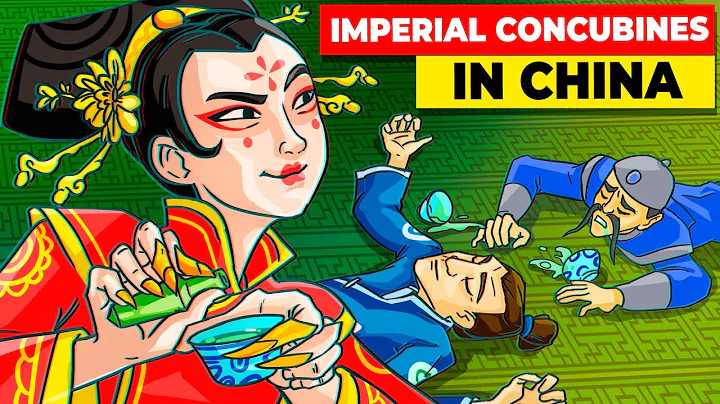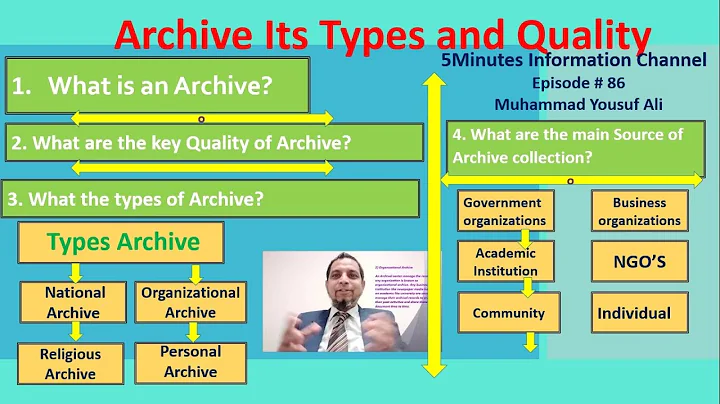
Commemorating the founding meeting of the Jiaoao Commercial Port Waterway Bureau Workers Club on June 25, 14th year of the Republic of China (the fourth from the right in the back row is Yan Changju)
In the historical archives and information of Qingdao , there are two photos and An old site has become a precious material for studying the red labor movement and party building of the water plant in the early days of the founding of the Party in Qingdao Water Works.
The first photo is a black and white historical photo of the Jiaoao Commercial Port Waterway Bureau Workers’ Club when it was established on June 25, 14th year of the Republic of China;
The second photo is the party lighting the “second fire” to establish the water plant in Yanjiashan, Qingdao Black and white personal photo of Lu Bojun, the leader of the Communist Party of China branch;
The former site of the party branch of the Qingdao Water Works (Jiaoao Commercial Port Waterway Bureau) of the Communist Party of China in 1925 (the 14th year of the Republic of China) is now located at No. 5577, Yanjiashan Village, .
Through the research and examination of the above precious materials, we can ascertain the occurrence, development and direction of the party’s leadership and party building in the waterworks (Jiaoao Commercial Port Waterworks Bureau) in the early days of the party’s founding.
Jiaoao Commercial Port Waterway Bureau Workers’ Club was established

Licun River Water Source
Yanjiashan Water Source, also called Licun River Water Source, is located in Yanjiashan Village at the junction of Zhangcun River and Licun River. It is a sea water source built in 1899. The second water supply plant after the Bohe water source, it was first built in 1906 and completed in 1908. The water supply volume is 15 times that of the Haibo River Water Plant. It is the largest water source in Qingdao. It was bombed during the Japanese-German War in 1914. In 1916, the third year after the Japanese occupation, the water supply was restored and it was responsible for the city's main water supply task. It was the backbone of Qingdao's original working class.

The steam pump house that the Germans blew up during the Japanese-German War in 1914

The steam pump house at the Licun River water source restored by the Japanese after World War I
The "May Fourth" movement triggered by the Qingdao problem in 1919 opened the door to China's The first page of modern history new democratic revolution . The return of Qingdao in 1922 ended the 25-year rule of the two imperialist countries of Germany and Japan. The Beiyang Government After that, with the development of urban industrialization and the extension of Jiaoji Railway to the inland, the class ranks of Qingdao workers It gradually expanded. During the German Lease period, the total population of Qingdao was only 14,000. By 1922, the number of workers in Qingdao alone reached 40,000, of which industrial workers accounted for more than half.

A Christmas badge from Sifang Airport workers in the early twentieth century to oppose the rule and oppression of Beiyang warlords ( Qingdao Municipal Museum collection)
Due to the reactionary rule of imperialism and its lackeys, the Qingdao working class has been deeply affected by it since its birth. Double oppression, leading to a life of extreme poverty, no personal freedom, and no democratic rights. Workers work more than twelve hours a day, with no holidays throughout the year. They are fired if they are not careful. Their daily wages are only about 2 cents, which is not enough to support their families. In order to fight for the right to survive, they continue to carry out spontaneous rights protection struggles. And established corresponding mass organizations. The first mass voluntary organization to be established was the "Christmas Party" organized by Guo Hengxiang of Sifang Machinery Factory.

Martyrs Deng Enming and Martyr Guo Hengxiang
In order to guide and unite workers and lead the labor movement to become the backbone of the party leadership, Representative of the First Congress of the Communist Party of China Deng Enming was appointed by the Central Committee of the Communist Youth League and the Shandong Jinan Branch of the Communist Party of China (team leader Wang Jinmei) to come to Qingdao. He used his identity as the editor of the supplement of "Jiaoao Daily" as a cover to do the work of league building and party building. The Qingdao branch of the Youth League was established in 1923. In the summer of 1924, the Qingdao group of the Communist Party of China was established at No. 18 Coast Road, Sifang District. Deng Enming was the group leader. The Qingdao branch was established in August. By the beginning of 1925, the number of party members had grown to 13, including 11 probationary members.

The picture shows the report of military police shooting workers
In 1925, the labor movement in Qingdao reached a new climax.After the establishment of the Jiaoji Railway Federation of Trade Unions led by the Qingdao branch of the Communist Party of China, preparations were made to establish trade unions in Japanese yarn mills in the Sifang area where textile mills were relatively concentrated. In early April, trade unions were established in three cotton mills: Dakang, Waiwai Cotton, and Longxing. Workers had their own organizations to safeguard their rights. The Japanese owners of the Dakang Cotton Mill were afraid of the rise of worker consciousness. In order to nip the newly established trade union in the cradle, they gathered the reactionary authorities and arrested three trade union leaders. After hearing the news, the workers led by the party were filled with indignation. On the one hand, they complained to the factory On the other hand, the "Weeping Letter of All Workers of Dakang Cotton Mill" was distributed to all walks of life, and the "Twenty-One " for the establishment of a trade union was proposed to the Japanese side. As Japan ignored the situation, the "April 19" cotton mill workers' strike broke out, which shocked the whole country. In order to support the strike, from April 21 to the end of April, the number of striking workers in the city reached 20,000, which was unprecedentedly large in scale and profound in impact.

The picture shows the propaganda flag of the Shanghai Youth Massacre Support Association
After the general strike, the Japanese government asked the pro-Japanese warlord Shandong to supervise Zhang Zongchang to suppress the strike. On the other hand, it dispatched two Japanese warships to sail into Jiaozhou Bay , putting pressure on municipal authorities. Jiaoao Supervisor Wen Shude According to the order of the Beijing government's Shandong Supervisor Zhang Zongchang, in the early morning of May 29, 2,000 military police were mobilized to surround Dakang, Waiwai Cotton, and Sanfang Cotton Mills and carry out bloody suppression, killing workers on the spot. 8 people were injured, 75 people were arrested, and more than 3,000 workers were fired and sent back to their hometowns. This "5.29" tragedy that shocked China and foreign countries and the "May 30" tragedy that happened in Shanghai the next day were known in history as "Shanghai Youth". massacre".

Martyr Li Weinong and the content of the "Twenty-One"
During the leadership strike struggle, Deng Enming, secretary of the Qingdao branch, was arrested by the Jiaoao Commercial Port Police Station and deported. The labor movement led by the party was suppressed and temporarily reached a low ebb. At this time, the party sent Li Weinong, who had just returned from studying in the Soviet Union, to lead the Qing Dynasty. A nationwide anti-imperialist and patriotic movement was brewing in the undercurrent.

On June 16, 1925, more than 30,000 people from all walks of life in the city marched through Zhongshan Road.
The "Shanghai Youth Massacre" attracted the attention of the Comintern at that time. On June 7, the Comintern issued a "Message to Workers, Peasants and All Working People", asking workers around the world to support the Chinese labor movement. Liu Shaoqi, Vice Chairman of the All-China Federation of Trade Unions , sent All-China Federation of Trade Unions and Beijing student relief support funds of 2,200 silver dollars. On June 16, 30,000 people in Qingdao held a revenge rally. Photo by Jiao'ao Supervisory Office. Due to public opinion and pressure from the masses, the Jiao'ao Supervisory Office was forced to release the 69 arrested workers on June 17.
In this movement, the water supply employees of the Jiaoao Commercial Port Waterworks Bureau not only participated but also expressed support with practical actions. The full name of the water plant in 1925 is Jiaoao Commercial Port Waterway Bureau, which has three working areas: Haibo River Water Source, Licun River (Yanjiashan) Water Source, and Baisha River Water Source ( Xianjiazhai). Jiaoao The Commercial Port Waterway Bureau is a backbone force in the Qingdao labor movement. From Deng Enming, secretary of the Qingdao Party Leadership Group of the Communist Party of China, to Li Weinong, secretary of the Qingdao branch of the Communist Party of China, and Ding Ziming, director of the Sifang Branch of the Communist Party of China, they have always cared about and guided the labor movement and party building of the Waterway Bureau.

Licun River water source
In the early days of the founding of the Party in 1925, Zhang Hongli and Li Degen in the work area under the Waterway Bureau had a close relationship with Guo Hengxiang and Ding Ziming, and they were already members of the Communist Party in 1925. During May and June, they worked secretly with progressive workers in the Licun River water source area, the Baisha River water source area, and the Waterworks Bureau headquarters to prepare for the establishment of a Waterworks Bureau trade union. Zhang Hongli and Li Degen drafted and formulated the "Jiaoao Commercial Port Waterway Bureau Workers' Club Charter" in accordance with the charter of the Sifang Machinery Factory Club. Under the leadership of the Communist Party of China organization, in 1925, that is, June 25, the 14th year of the Republic of China, in Yan The founding meeting of the Jiaoao Commercial Port Waterway Bureau Workers Club was held in Jiashan (now No. 577, Yanjiashan Village).

"Articles of Association of Workers' Club of Jiaoao Commercial Port Waterway Bureau" (collected by Qingdao Municipal Museum)
Historical records: On the day the club was established, all units sent representatives to participate. Representatives such as Ding Ziming from Sifang Machinery Factory attended the conference as special guests. Representatives and guests totaled More than sixty people. Everyone gathered together happily and happily, beating gongs and drums, setting off firecrackers, and hanging the five-color national flag at the door. The scene was very lively. After the conference, we took photos. This precious historical photo is included in Qingdao's historical archives as a historical witness.
According to the memoirs of Yan Changju and Yan Hengzhen, old tap water party members who joined the party in 1926, the reason why Yanjiashan was established at that time was that the waterway bureau was located in the city and was too close to the base camp of the reactionary authorities; the second was the suffering of the labor movement in Sifang District . After the suppression, the center of gravity of the labor movement began to shift to Cangkou ; thirdly, the Licun River water source was located in the center of the three water sources, and gathered the backbone of the labor movement.

Hu Xinzhi martyr
The Workers’ Club established on June 25, 1925 was a club in name only, flying the five-color flag of the Beiyang government, but in fact it was a trade union organization led by the party. The workers' club was established in late June, at the lowest point of the suppression of the Qingdao labor movement. The union established under the white terror further demonstrated the strength of the workers of the Waterworks Bureau under the leadership of the party. Soon after the club was established, it was closed down by Zhao Qi, the general office of the Jiaoao Commercial Port Bureau. The club’s public and secret activities were blocked. Li Weinong, the leader of the Qingdao party organization who cared about and protected the labor movement of the Waterway Bureau under the white terror, 7 On July 26, he participated in a party activity in Xiaobao Island and was unfortunately arrested when he returned to his residence in Sifang. On July 29, Li Weinong and Hu Xinzhi of the Qingdao Citizen were secretly killed by reactionary military police on the beach of Tuandao, Qingdao. They were 30 years old. Years old, the statue of martyr Li Weinong still stands near Tuandao, Qingdao. According to records, Zhang Hongli and Li Degen, party members of the Yanjiashan water source area, learned that Li Weinong had been killed and planned to snatch the body at night. However, they failed due to the tight supervision of the waterway authorities.

Statue of Martyr Li Weinong
After the "May 29th" massacre in Qingdao, the revolution in Qingdao entered a low ebb. The revolutionary fire that Li Weinong had just ignited shortly after he came to Qingdao was ignited by the Beiyang warlord Zhang Zongchang, who was known as the "devil incarnate" and the "Three Ignorants" (who did not know that he had How much money, how many guns, how many concubines) were suppressed by the Shandong Supervisory Office, and the revolution once again hit a low ebb.
Partisan Lu Bojun came to Qingdao to ignite the "second fire"
In order to reverse the situation and promote the development of the workers' movement, in the winter of 1925, the Shandong Prefectural Committee of the Communist Party of China sent Lu Bojun to Qingdao from Jinan to work as a primary school teacher for the children of workers of the Waterway Bureau in Yanjiashan Village. As a cover, he was responsible for the leadership of party organizations in the Sifang and Cangkou areas.

Lu Bojun Martyr
Lu Bojun was born in 1895 and joined the Communist Party of China in 1924. Judging from Lu Bojun’s photo and Yu Xiu (younger brother)’s biography of his brother, he was tall and burly. He has a square and round face. He often wears a black coat and a copper basin hat. He is usually taciturn and speaks very kindly to the workers. When I came to Yanjiashan, I mingled with the workers in Yanjiashan. I gave classes to the children during the day and held night schools for the workers in the evening. I inspired the workers to realize their consciousness, propagated revolutionary principles, explained to the workers the reasons for their suffering, and how to unite to stand up and seek liberation.
In Yanjiashan Village, he presided over the printing of a workers' tabloid, educated workers, and organized the labor movement. He reprinted the "Communist Manifesto" and distributed it widely to Zhongyuan (today's National Cotton Factory No. 6), Baolai (National Cotton Factory No. 9), and Sifang Machinery factories and factories and mine schools in the city. These underground activities attracted the attention of the reactionary authorities. The Director of the Waterway of Jiaoao Commercial Port and the General Office of Jiaoao Commercial Port, Zhao Qi, both personally investigated them and cleverly avoided them with the help of workers, preventing the enemy's conspiracy from succeeding.

Water Plant Model Yan Changju
In order to adapt to the development needs of the struggle situation, Lu Bojun attached great importance to cultivating and developing party members among the advanced elements of workers and established the Yanjiashan Party Branch of the party. Yan Changju, a worker activist in the Shuiyuan area, said in a memoir: My understanding of the party organization gradually deepened. Li Degen, who first worked with me, asked me, why do the poor suffer? The reason why you are oppressed. Later, I met Teacher Lu. After Teacher Lu’s education, I felt that my heart was clearer and my eyes were brighter. One time when I was alone, Teacher Lu asked me, "Are you willing to join the organization?" I was very happy and said, "Needless to say, it's for the benefit of the working people!" After half a year of Education, I feel I understand a lot of truth, and realize that I am in a large group, with a leader in front and thousands of troops following behind.

Picture of the swearing-in ceremony for joining the party, the middleman is Yan Changju. (From the Qingdao Water Affairs Party History Education Base)
One night in April or May of the 15th year of the Republic of China (1926), Lu Bojun called me to his room. As soon as I entered the door, I saw Li Degen coming, and then on the wall The red flag (party flag) with a sickle and an ax was hung up. This was a party joining ceremony. The two of them introduced me to join the glorious Communist Party.

After Yan Changju joined the party, Yan Hengzhen also joined the Communist Party of China. Soon, he established the first party branch among the workers of the Jiaoao Commercial Port Waterway Bureau. This was also the birth of another grassroots party organization after the Qingdao Sifang Branch of the Communist Party of China. Lu Bojun is the party secretary. In order to keep confidentiality, our organization is known as the Workers' Children Primary School Board of Directors. Lu Bojun is the principal, Li Degen is the school director, Zhang Hongli is in charge of foreign affairs, Yan Hengzhen is in charge of custodianship, and Yan Changju is in charge of finance. These five people are nominally It runs a school, but is actually the Yanjiashan Party branch of the Communist Party of China.
According to Yan Hengzhen’s recollection: He once swore an oath under the party flag late at night. The party flag used at that time was cut out of paper, and it was very rough with a hammer and sickle. The oath included: “I will not sue my parents above, and I will not sue my parents below.” Words such as "Sue wife and children". When joining the party, Lu Bojun once warned: The organization (the Communist Party) serves workers, and once you join, you are not allowed to join other organizations. At that time, the party had a single line of communication, and each other did not know who was a party member. The harsh struggle situation at that time made the party's activities strictly restricted by party discipline.

Yu Xiu (left) and Lu Fumin (right) in Yan'an
In addition to assuming leadership of the party, Lu Bojun also cooperates with Comrade Guan Xiangying, who was appointed by the Central Committee of the Communist Youth League to work in youth development. Lu Bojun had a younger brother Lu Guangyi (also named Yu Xiu), who went to Jiaoao Middle School (No. 1 Middle School) in 1924. Yu Xiu was active in thought and motivated, and became a member of the Communist Youth League in 1925. Lu Bojun introduced Guan Xiangying to meet and bring him closer to the organization.
Yu Xiu wrote in his memories of the first meeting: "On Sakura Road, the main road in the park (Zhongshan Park), my brother pointed at a young tourist coming towards me under the vine flowers and said: That's him. I stared intently. When I went there, I saw the young man wearing a peaked cap and a dark gray coat, holding a volume of magazines under his arm and walking over with a smile on his face." This is Guan Xiangying (Zheng Qin). From then on, Yu Xiu often discussed and listened to education and continued to make progress. In 1931, Yu Xiu joined the Leftist League in 1931 and joined the party in 1936. In 1937, he went to Yan'an and served as secretary of the Party branch of Yan'an University. After the founding of the People's Republic of China, he was promoted to To the Vice Governor of Shandong Province. In the database of our Water Affairs Museum, there are still handwritten materials by Yu Xiu introducing Lu Bojun's life to our water company .

Former address of Yan Jiashan Party Branch
In the autumn and winter of 1926, Lu Bojun was actively developing revolutionary forces in Qingdao and preparing to meet the revolutionary upsurge with stronger mass power. When the reactionary authorities mobilized a large number of military police to raid Yan Jiashan, Lu Bojun was in time. After receiving the secret report, under the escort of the party organization one day in advance, I sneaked back to Jinan from Chengyang overnight to carry out a new mission.
After Lu Boxun was transferred, the party sent Li Xingfu to Yanjiashan to replace Lu Boxun as party branch secretary and continue to lead the party's building. The autumn and winter of 1926 were the period of white terror. The reactionary authorities intensified their suppression of the labor movement in Li Cang, . At midnight on the 16th day of the twelfth lunar month of that year, a large number of reactionary military and police surrounded Yanjiashan and arrested Li Xingfu, Li Degen and others. After hearing the news the next day, Yan Changju and Yan Hengzhen secretly took the mimeograph machine to the boiler room of the water source area, filled it in the furnace, and burned it. At that time, the situation was tight and they could be arrested at any time. In order to reduce unnecessary sacrifices, Yan Changju and Yan Hengzhen went to Dalian .
The arrested Li Xingfu and Li Degen faced severe torture by the reactionary authorities, strictly kept secrets, kept secret, and did not betray their comrades. Therefore, the reactionary authorities did not obtain any important evidence. After being detained for four or five months, they had to be released. All party members of the party branch No one died. After Li Xingfu was released from prison, he returned to his hometown in Jimo. Li Degen never contacted the organization again after returning to the Yanjiashan water source. It is understood that Zhang Hongli returned to his hometown of Weixian before Lu Boxun returned to Jinan.

Lu Boxun and Yan Jiashan Party branch’s former address
After the news passed, when Yan Changju and Yan Hengzhen returned to the water plant, the party organization no longer existed and they had lost contact with the party. After Lu Bojun sneaked back to Jinan, he was arrested by the reactionary authorities while organizing a workers' strike in 1927 and died heroically. The first party branch secretary of Yan Jiashan, the Communist Party of China who ignited the second fire in Qingdao, was only 28 years old when he died.
Since the water supply party organization was destroyed in 1926, it has never recovered under the white terror. After the defeat of the Beiyang government in 1929 and the Kuomintang taking power, the leadership activities of the Communist Party have been suppressed and sabotaged by the White Terror. The activities of the party organizations in tap water have been at a low ebb until the autumn of 1943, when the Qingdao underground party organization of the Communist Party of China sent underground party member Li Jipei to attack Enter the waterworks and begin underground work. Develop activists among workers and cultivate a group of new backbones for the red masses and for the restoration of party organizations. On the eve of liberation, according to the party's instructions, he organized the masses to carry out factory protection and made great contributions to ensuring the normal water supply after the liberation of Qingdao. On July 1, 1949, the Qingdao Municipal Military Control Commission received the commendation order for units and individuals who had made meritorious service in protecting the factory. .

Director Xiang Ming, Deputy Directors Lai Keke, and Tan Xilin of the Military Control Commission of the Chinese People's Liberation Army issued the No. 1 Commendation Order on July 1, 1949, to commend Qingdao Waterworks, Power Plant, Qingdao Textile Company and other units and individuals who contributed to the liberation of Qingdao. Give awards.
The official restoration of the CCP party organization in the waterworks was in October 1949, when the Qingdao Waterworks Party Branch was established with the approval of the Municipal Party Committee. It has been 73 years since 1949. All employees of the waterworks group are under the leadership of the party organization. , carried out vigorous socialist construction, carried out solid socialist reform and opening up, led and ensured the city's smooth tap water supply, and promoted and ensured the economic development of Qingdao City. These histories strongly prove that Qingdao Water Supply Group Company not only has a rich history of 123 years, but also has a glorious tradition of consciously placing itself under the leadership of the party. This is the lifeblood of the city that ensures Qingdao's rapid development and endless prosperity.
Today, in the 1920s, that is, in the 15th year of the Republic of China, when the Jiaoao Commercial Port Waterway Bureau Workers Club was established, that precious photo is the earliest red historical image of the Water Group, and is also regarded as a national precious movable cultural relic. Entered into the history of Qingdao.

The house in the background of the photo is also the place where the Yanjiashan Party branch ignited the second fire. It is now No. 577, Yanjiashan Village, and has been listed as a protected building for the history of the Communist Party of China by the municipal cultural relics department.

In 2014, the overseas English version of China Pictorial (formerly People's Pictorial) published the precious photos of the establishment of the Jiaoao Commercial Port Waterworks Bureau Workers' Club on June 25, 14th year of the Republic of China as important information on the national movable cultural relics pilot unit on the second Period, spread overseas in English.
Attached: Yan Changju’s information

Yan Changju
Yan Changju, a native of Yanjiashan Village, Qingdao, was born in 1900. At the age of 15, he went to work at the Licun River water source of Qingdao Waterworks. He joined the labor union in 1925 and joined the party in 1926. At the end of the year, the party organization suffered damage and went to Dalian , returned to youth after the incident, rejoined the Communist Party of China in December 1949, and served as deputy section chief of the Production Technology Section in 1951. From 1950 to 1956, he was named Qingdao Model Worker for six consecutive years, and was named Shandong Province and National Model Worker. In 1950, he was elected as a deputy to the Qingdao People's Congress, and in 1954, he was elected as a deputy to the first People's Congress of Shandong Province. There were many inventions and creations in his life. He retired in 1960 and died of illness on January 16, 1985, at the age of 85.

Qingdao Water Affairs Party History Education Base

The five figures in the group of statues are five members of the Communist Party branch of the Waterworks Bureau, with the branch secretary Lu Bojun in the middle.


The well-preserved engine room of Licun Water Source Ground built by Germans in 1906
As the only party history education base in the country built on the former site of the water source site, Qingdao Water Affairs Party History Education Base was invested and rebuilt by Qingdao Water Affairs Group, covering an area of It is about 8,000 square meters. The east side is the party history education exhibition area, and the west side is the production area. There is an exhibition area for the factory building at the former site of the Licun Water Source, the "Water Moisturizing Heart" Party History and Party Building Museum, etc. The main exhibition hall covers an area of 611 square meters. The hall takes the development of the Communist Party of China as the main axis. It is divided into three chapters: Creation of the World, Changing the World, and Splendid Land. It mainly focuses on the establishment and development of the party organization in Qingdao, and the development of the working class under the leadership of the party. The workers' movement, on the eve of the liberation of Qingdao, the underground party organization led the water plant workers to carry out the struggle to protect the plant and achieved a comprehensive victory as the main body. Through more than 50 exhibits, more than 100 pictures, oil paintings, sculptures, videos and other displays, it is comprehensively presented to the Qingdao local party Under the leadership of the organization, Qingdao's water industry workers carried out a historical picture of revolution and party building. It is a red education base that integrates party history education and urban water supply propaganda. It also adds another building to island city with the history of Qingdao water affairs and A unique party history education base.
would like to dedicate this set of pictures and texts to the party’s birthday! Warmly celebrate the 101st anniversary of the founding of the Communist Party of China!
Han Shaojiang, born in 1951, started working in 1968 and retired from the water company in 2011. Over the years, I have enjoyed collecting comic books, researching urban water supply, and collecting paper products. As a collector, his collection has been exhibited in this city many times and has been broadcast on CCTV and published in national magazines. In the national census of state-owned movable cultural relics, he was awarded by Qingdao City: Advanced Individual with Special Contribution.
The pictures and texts in this group are provided by teacher Han Shaojiang. They are compiled and released by the Qingdao City Archives Forum public account and Qingdao City Memory Toutiao account. Please indicate when reprinting!





















